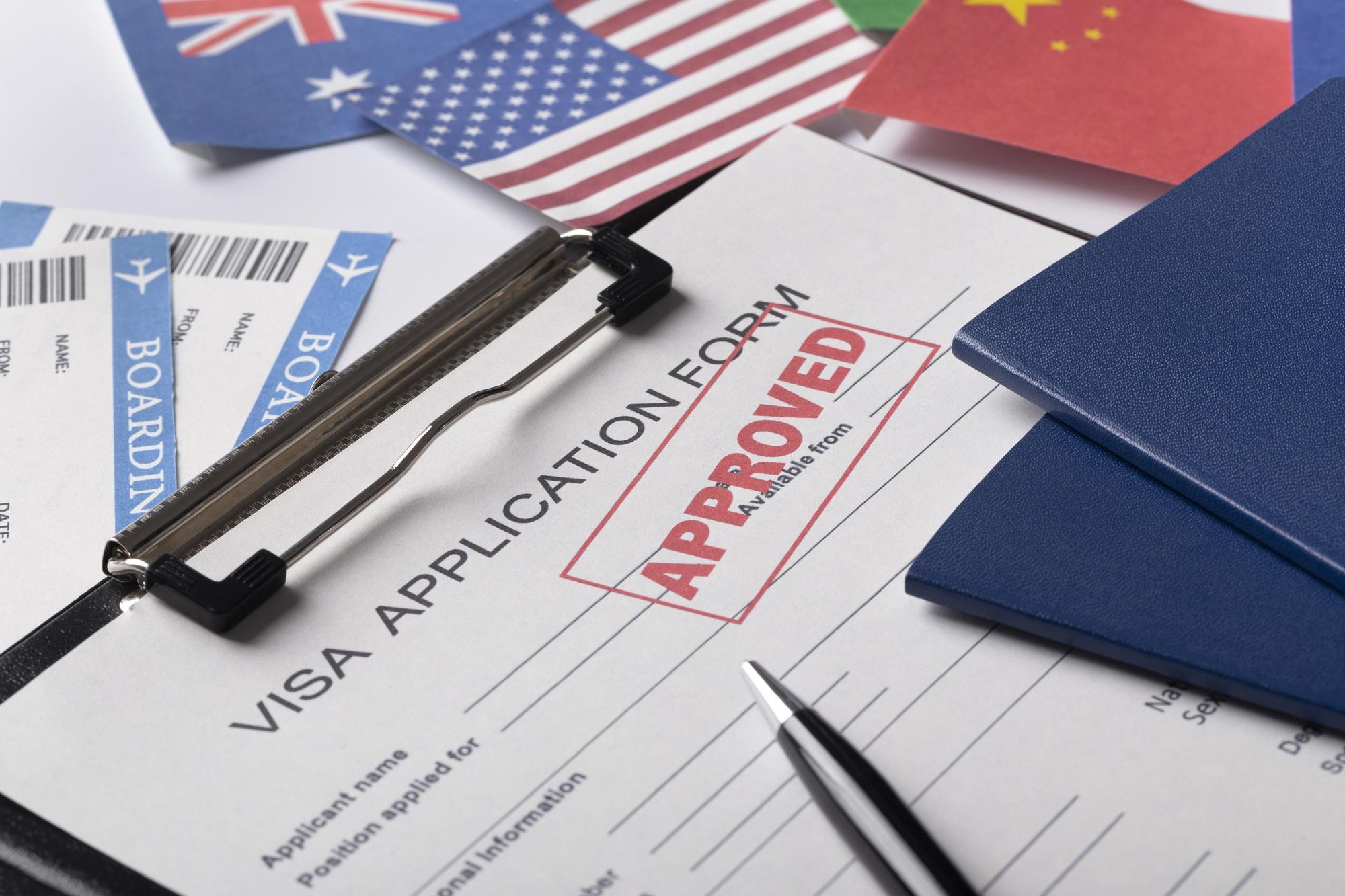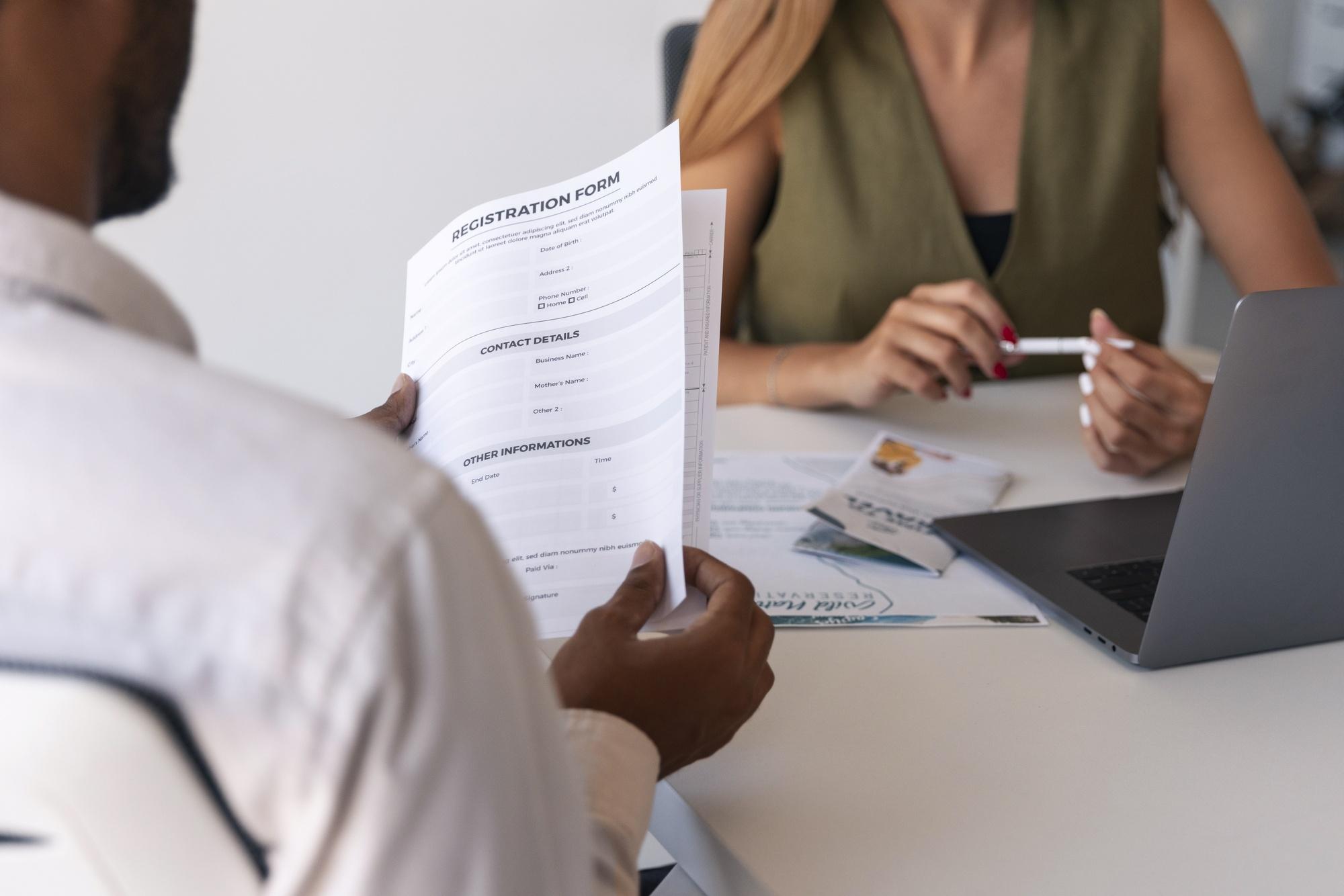
Work visas allow non-citizens to work legally in the United States under specific conditions.
Businesses use them to fill gaps in their workforce, and professionals rely on them to access career opportunities. These visas are essential for sectors that need specialized skills or additional workers that the local labor market cannot provide.
Work visa requirements and the work permit application process help businesses plan for hiring and give workers a clear path to legal employment.
Today, EquityHR covers work visa application steps, employer responsibilities, legal challenges, and benefits that may not be widely known. Employers dealing with employment immigration and workers applying for visas can use this resource to make informed decisions.
Key Takeaways
- Work visas enable non-citizens to reside and work in the United States, either temporarily or permanently, and legally.
- As an employer, you may be required to pay for the visa sponsorship costs and fulfill other legal prerequisites.
- The H-1B visa and J-1, L-1, and O-1 work permits are the most frequently used immigration options for employment.
- Different types of work visas come with differing application processes, some of which include quotas, petitions, and interviews.
- Employers need to follow strict rules of compliance to prevent legal problems.
- Visa holders can access professional development programs and other benefits in addition to employment benefits.
What is a Work Visa and Why Do They Matter?

Foreign nationals can obtain legal work authorization in the United States through the issuance of work visas by the U.S. government. The visa type depends on the job position together with the industrial sector and duration of work.
The U.S. government issues work visas through two primary categories.
- Temporary (Non-Immigrant) Work Visas — Individuals can work for a specified time through employer-sponsored programs. Two types of temporary work visas exist in the United States: H-1B for skilled professionals in specific fields and J-1 for cultural exchange and training programs.
- Permanent (Immigrant) Work Visas — With these visas, individuals are able to work and reside in the United States indefinitely. This group includes green cards, which are sponsored by an employer.
Employers look for foreign workers when there are no adequately qualified candidates in the local market or when there is a particular skill set that is required.
International recruitment is critical for sustaining competitiveness in several sectors like technology, healthcare, and engineering. Work permits offer legality to employees to work, but they are bound by a number of restrictions. Some need employer approval, while others cap the temporal limits of stay.
EquityHR supports businesses in managing international employee processes to maintain compliance during their onboarding process.
Hidden Perks You Might Be Overlooking
Work visas provide benefits that extend past employment authorization to visa holders. Most work visa holders stand to benefit from:
- Tuition Reimbursement & Professional Development: Some employers repay all or part of the tuition costs associated with obtaining further education, industry-specific certifications, or other types of training relevant to their employment. This is aimed at equipping visa holders with skills that improve their competitiveness in the labor market.
- Wellness Programs: Employers can offer health insurance, mental health services, gym memberships, or wellness accounts. These programs help employees to manage physical and mental health as it is important for career advancement.
- Flexible Work Arrangements: Some work visas permit remote or hybrid work depending on the employer’s policies and the visa’s terms. Employees in certain positions are able to work from various places, which mitigates relocation stress and enhances work-life balance.
- Dependent Benefits: Many work visas grant legal status for spouses and children of the visa holder to legally reside in the U.S. Some visas, like the H-4 (for dependents of H-1B holders), allow the spouse to work or study while in the country.
- Path to Permanent Residency: Some visa types function as stepping stones to help workers get their green card. U.S. workers who stay in the country for extended periods through their employment can obtain permanent residency benefits from their employers.
Types of Work Visas (Key Categories)

H-1B Visa (Skilled Workers & Specialty Occupations)
The H-1B visa is issued to professionals working in specialized fields such as IT, engineering, healthcare, finance, and biotechnology. Many companies rely on this visa to fill roles requiring specific expertise that is not readily available in the domestic workforce.
This visa requires employer sponsorship, meaning a U.S.-based company must offer a job to the foreign worker and submit a petition on their behalf. To qualify, the worker must have at least a bachelor’s degree or its equivalent in a relevant field.
The U.S. government limits the number of H-1B visas issued each year. Currently, there is an annual cap of 85,000 visas, with 65,000 available to general applicants and an additional 20,000 reserved for those who have earned an advanced degree from a U.S. institution. Because demand often exceeds supply, a lottery system is used to determine who receives the visa.
An H-1B visa is typically granted for three years, with the option to extend for an additional three years, making the maximum stay six years. In some cases, visa holders who are in the process of obtaining a green card may qualify for further extensions beyond the six-year limit.
J-1 Visa (Exchange Visitor Program)
The J-1 visa is designed for individuals participating in cultural exchange programs, internships, and research initiatives.
It is commonly used by students, scholars, and professionals looking to gain experience in the United States while promoting international collaboration. To obtain a J-1 visa, applicants must secure sponsorship from an approved organization, such as a university, government agency, or nonprofit institution.
These sponsors oversee the program and ensure participants meet eligibility requirements.
Some J-1 visa holders must fulfill a home residency requirement, meaning they must return to their home country for at least two years before applying for another U.S. visa unless they qualify for a waiver.
L-1 Visa (Intra-Company Transfers)
The L-1 visa is a non-immigrant visa that allows multinational companies to transfer employees from a foreign office to a U.S. branch, subsidiary, or affiliate. This visa facilitates the relocation of experienced personnel needed for leadership, knowledge transfer, and operational efficiency within global companies.
It is classified into two categories based on the employee’s role. The L-1A visa is for managers and executives who direct company operations, make high-level decisions, or oversee key personnel.
To qualify, the applicant must have worked for the company in a managerial or executive role for at least one year in the past three years. The initial L-1A visa is granted for up to one year for new offices and up to three years for established offices, with extensions available for up to a maximum of seven years.
O-1 Visa (Individuals with Extraordinary Abilities)
The O-1 visa is granted to individuals who have demonstrated exceptional ability in fields such as science, education, business, athletics, or the arts.
This visa is intended for those who have reached the top of their profession and can provide substantial evidence of their accomplishments. To qualify, applicants must show a record of sustained national or international recognition, typically through major awards, published work, critical reviews, or significant contributions to their industry.
Unlike other work visas, the O-1 does not have an annual cap or a limit on the number of extensions, making it an attractive option for highly skilled professionals.
The initial visa is granted for up to three years, with one-year extensions available as long as the applicant continues working in their field of expertise. Many professionals, including researchers, entertainers, and executives, use the O-1 visa as a pathway to long-term career opportunities in the United States.
Source: Indeed
How Many Work Visas Are Issued Each Year?

The United States issues a limited number of work visas every year, and the demand usually outweighs the supply. Some key trends:
- The H-1B visa has an annual cap of 85,000, which includes 65,000 for general applicants and 20,000 for U.S. master’s degree holders.
- L-1 and O-1 visas have no restrictions on the number issued, but they are rigorously documented.
- J-1 visa quotas depend on the availability of a given program and the institution hosting the program.
- Permanent work visa processing delays occur because of the green card backlog.
Work Visa Application Process: Step-by-Step Guide
The preparation and documentation needed for applying for a work visa can be quite detailed. Each step is critical in determining whether the application is successful or not. This guide is designed to aid employers and applicants with a streamlined process.
- Employer Sponsorship — Most work visas require a U.S. employer to sponsor the applicant. The employer must first determine whether the position qualifies for a visa and ensure compliance with labor laws. Sponsorship involves filing a petition, proving the need for a foreign worker, and sometimes obtaining a Labor Condition Application (LCA) from the Department of Labor.
- Filing the Petition – Employers must submit Form I-129 (Petition for a Nonimmigrant Worker) to U.S. Citizenship and Immigration Services (USCIS). This form includes detailed job descriptions, salary information, and supporting evidence of the applicant’s qualifications. In some cases, additional forms or supporting letters from industry experts may be required.
- Work Permit Application & Documentation – After USCIS approves the petition, the employee must complete a visa application. This step requires gathering and submitting proof of qualifications, employment offer letters, academic records, and identification documents. Some visa categories also require medical examinations or police clearance certificates.
- Visa Interview – Depending on the type of visa, the applicant may need to attend an interview at a U.S. consulate in their home country. During the interview, the consular officer assesses the applicant’s background, intent to work in the U.S., and the legitimacy of the job offer. Incomplete or inconsistent responses can lead to delays or denials.
- Approval and Work Authorization – If the visa is approved, the employee receives a visa stamp in their passport, allowing entry into the U.S. Upon arrival, they must report to their employer and may need to complete additional paperwork, such as Form I-9 (Employment Eligibility Verification). The visa holder must comply with all work authorization conditions, including duration limits and employer restrictions.
Source: US Department Of State
Common Challenges and How to Overcome Them
Visa Caps and Quotas

Certain work visas, such as the H-1B visa, are subject to annual limits, which can lead to a lottery system for selecting applicants. This can make securing a work visa more challenging, as the number of applications often exceeds the available spots.
Challenges:
- H-1B visa has a cap, leading to increased competition and a lower chance of selection in some years.
- Other visa categories, like O-1 and L-1, may also have limited availability or specific eligibility requirements.
How to Overcome:
- Consider applying for cap-exempt employers (e.g., universities, research institutions, or non-profits) that aren’t subject to the same visa caps.
- Explore alternatives such as the O-1 visa for individuals with extraordinary abilities or the L-1 visa for intra-company transferees.
- Look into other work visa types that might not be restricted by caps.
Processing Delays
Processing delays are a common challenge when submitting a work visa application. These delays can be caused by various factors, such as backlogs at the U.S. Citizenship and Immigration Services (USCIS), missing documents, or the need for additional administrative review.
Challenges:
- Backlog of applications due to limited processing resources at USCIS.
- Incomplete or improperly filed work permit application materials.
- Administrative processing or requests for additional evidence (RFE).
How to Overcome:
- File early: Begin your work visa application process as soon as possible to avoid delays.
- Premium processing: If available, use this service to expedite your application.
- Ensure all required documents are correctly prepared and submitted, avoiding delays due to missing or incomplete information.
- Stay informed on the status of your application, and be ready to respond quickly to any requests for additional documentation.
Visa Denials and Rejections
Visa denials and rejections can occur for various reasons, such as incomplete applications, insufficient proof of eligibility, or lack of employer support. These rejections can be disheartening and slow down the entire immigration process.
Challenges:
- Incomplete or unclear work visa application materials.
- Lack of clear job descriptions or sufficient proof of qualifications.
- Employer’s failure to support the visa petition adequately.
- Missing documentation or misunderstanding of work visa requirements.
How to Overcome:
- Strengthen your application by including clear job descriptions, thorough documentation of your qualifications, and detailed employer letters that outline the need for your services.
- Ensure you meet all the work visa requirements, including the necessary education, work experience, and skills.
- Work closely with your employer to ensure they fulfill their role in the application process, providing complete and accurate support letters.
Avoiding Legal Issues
Navigating the legal requirements of employment immigration can be complicated. Employers must comply with labor laws, wage requirements, and employment verification processes. Similarly, employees need to stay on top of their work visa expiration dates and apply for extensions or renewals well in advance.
Challenges:
- Employers must comply with federal and state labor laws related to wages, working conditions, and immigration status.
- Failure to renew a work visa before it expires can result in loss of work authorization.
- Employees and employers may unintentionally violate visa terms, leading to legal consequences.
How to Overcome:
- Employers: Ensure compliance with all labor laws and work visa requirements, including paying required wages, verifying employment eligibility, and providing support for visa applications.
- Employees: Track visa expiration dates and apply for extensions or renewals as soon as possible to avoid issues with expired visas.
- Keep communication open with your employer to ensure you both understand the immigration and labor law requirements.
Employer Responsibilities (What Businesses Need to Know)

Employers must comply with U.S. immigration laws to ensure they are hiring legally authorized workers.
This includes verifying worker eligibility and maintaining accurate records of documentation. Compliance not only protects the business from legal issues but also ensures fair treatment for workers.
For H-1B visa applications, employers are required to submit a Labor Condition Application (LCA), which guarantees that the company will offer fair wages and working conditions to foreign workers.
This ensures that employees aren’t exploited and that their compensation aligns with local standards.
When hiring foreign workers, employers should maintain clear, formal contracts that outline job roles and compensation. It’s crucial to offer legal support to ensure compliance with work visa requirements and stay informed on changing immigration policies to avoid legal complications.
How Can You Simplify the Work Visa Process?
Obtaining work visas can be one of the most difficult tasks businesses face.
However, with a proper understanding of the work permit requirements and a detailed comprehension of the work permit application process, both businesses and professionals can mitigate these challenges fairly easily.
Employers must fulfill all H-1B visa requirements and other visa standards, while employees should proactively handle their work permit application process.
If your organization needs additional immigration guidance, we can connect you with qualified immigration attorneys who specialize in employment immigration procedures.
FAQs
What is the H-1B visa, and who qualifies for it?
It is a visa given to skilled personnel in specialized IT fields like healthcare and engineering. Applicants must possess a bachelor’s degree or its equivalent in one of the relevant fields and must be employed by a United States-based employer to be eligible. Because of annual caps, the visa is very competitive.
What are the work visa requirements for employers?
Employers must abide by US immigration policies like verifying a worker’s eligibility for employment as well as having a Labor Condition Application (LCA) for H-1B visas. Moreover, employers need to provide both wages and legally acceptable working conditions to their employees. Otherwise, they run the risk of violating laws at various levels.
How can I apply for a work visa?
To submit an application for a work visa, it is preferable to first obtain a sponsorship from an employer in the US who will file a petition on your behalf. The progression could involve filing the application for the work permit, providing proof of necessary qualifications, and, in some cases, attending a visa interview.
What happens if my work visa is denied?
It is possible for a visa to be declined if the application is not fully complete, does not contain all the relevant supporting documentation, or does not meet the work visa eligibility requirements.
To avoid denials, ensure that the application has sufficient justification for the employment being sought, proof of relevant qualifications is presented, and support documents from the employer are adequately detailed.
Are there any benefits beyond employment for work visa holders?
Absolutely, a number of work visas provide other advantages, such as tuition reimbursement, wellness programs, flexible work hours, and benefits for dependents. The H-4 visa, for instance, allows the spouse of an H-1B visa holder to work or study in the US.





